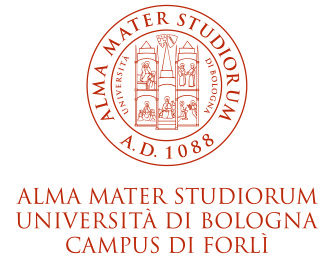Guidelines and Editorial criteria to write your thesis
The thesis must be 80-120 pages long. Pages must contain 32 – 35 lines, each of 65 – 70 characters of a specific type (such as NY Times, Courier, Helvetica).
The Academic Year must be specified on the title page of the degree thesis, in compliance with the Course Teaching Regulation.
Abstract
When you will send the online application to graduate in StudentiOnLine, you will have to write the Abstract of your Master thesis.
The abstract must not exceed 2000 characters and must include a concise summary, the methodology used and the main results achieved.
It is necessary that the written papers (term papers and Master thesis) comply with coherent and homogeneous editorial standards.
Hence, a proposal about that will be provided in the following pages. Be aware that this proposal is merely an indication and, first and foremost, it is the Supervisor’s duty to verify that the thesis is drafted in a coherent manner, if she/he legitimately indicates a different editorial system.
It must be listed in alphabetical order according to the authors’ surname/second name and, respectively, according to the year of publication.
Examples:
1) Monographs:
Majone G. (1996), Regulating Europe, London, Routledge.
2) Collective volumes:
Poterba J. and von Hagen J. (eds.) (1999), Fiscal Institutions and Fiscal Performance, Chicago and London, The University of Chicago Press.
3) Essays included in collective volumes:
Strauch R. (2000), Institutional Reforms and Belgian Fiscal Policy in the 90s, in: Rolf R. Strauch and Jürgen von Hagen (eds), Institutions, Politics and Fiscal Policy, Boston and Dordrecht, Kluwer Academic Publishers, pp. 215-34.
4) Articles published in journals:
Pierson P. (1996), The Path to European Integration. A Historical Institutional Analysis, in «Comparative Political Studies», n. 2, pp. 123-63. (2000), Increasing Returns, Path Dependence, and the Study of Politics, in «American Political Science Review», n. 2, pp. 251-67.
5) Articles published only on the web:
Terzani S., The Powers of the Scottish Parliament, www.lgs.uk.ac/terzani/parlscozza.
In-text bibliographic references have to be reported in round brackets by indicating the author’s surname, followed by the year and, after a comma, by the page number if necessary (ex. Rossi 2006, 233-237). When more works are enclosed in the same round brackets, they have to be separated by a semicolon. The author’s name initial has to be inserted between the surname and the year only if the final bibliography includes two authors with the same surname. Each reference has to be listed at the end of the thesis by respecting the examples reported above.
Every work from which interpretations and information are taken has to be cited. Sentences or parts of sentences quoted from any works and reported in the text shall be placed inside quotation marks and the source has to be cited.
The term «ibidem» (with small initial letter) shall be used to refer to a work previously cited. (Scharpf 1997, 32) .................. (ibidem, 127-28).
The abbreviation «cfr.» shall be written in small letters and with a final full stop.
Textual citations shall be written between guillemets «...».
Quotations of more than four lines have to be reported in a separate paragraph. For each work cited in brackets in the text, the corresponding references have to be reported in the bibliography. It is advisable to cite only works which have been actually consulted. In case you deem it necessary to insert second hand textual citations, they have to be specified with the expression «cited in». For example: (Hamer 1977, cited in Cox 1987, 70). Also in this case it is necessary to list the complete references in the bibliography. Normally, footnotes should not exceed 10 lines.
If statistical surveys carried out by the student are included in the thesis, it is advisable to pay special attention and justify the sample selection and consistency. Tables and figures shall be headed and numbered in progressive order and shall be referred to from the text with their number. The notes of tables and figures (diagrams, graphs, cartographies) have to be placed at the foot of the corresponding table and figure and not at the foot of the page. Tables must be self-explained, so that the reader does not need to have recourse to the text to understand them. The text must describe the essential content of the tables so that the reader who does not want to focus on the tables can go on reading as s/he has already understood the basic information conveyed by the table from the text. Every table must be referred to from the text at least once in order to explain its content and to justify its usefulness for the thesis. Tables and figures must be reported directly in the text, approximately in the point where they will be inserted in the paper format.
The use of italics should be limited to foreign terms, including Latin ones (e.g., pro tempore, in primis, ad hoc, the Paris arrondissements, the German Länder), unless they are of common use élites. In the latter case, the author can use a normal font. The words that the author want to enhance, the table headings and the titles of volumes or articles quoted in the text shall be also in Italics. Names of associations, institutions, etc. shall be in normal style both in the text and in the notes (ex. Isr = Institute for Social Research). Abbreviations shall not be italicized, even though they refer to foreign words. Foreign words shall be always put in italics, while it is not possible to use quotation marks.
[ .docx 78Kb ]
